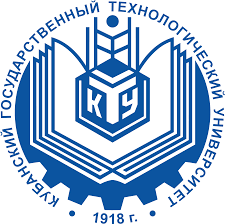
VII Съезд биофизиков России
Краснодар, Россия
17-23 апреля 2023 г.
17-23 апреля 2023 г.


|
VII Съезд биофизиков России
Краснодар, Россия
17-23 апреля 2023 г. |
 |
Программа СъездаСекции и тезисы:
Биофизика сложных многокомпонентных систем. Математическое моделирование. БиоинформатикаАвтоматизированная методика разметки полисомнографических записей на основе технологии параллельных вычисленийМ.О. Журавлев1*, Р.В. Уколов1, А.Е. Руннова1,2 1.СГУ; 2.СГМУ; * zhuravlevmo(at)gmail.com Состояние сна сегодня рассматривается как активный нейрофизиологический процесс, сопровождаемый относительно циклическими изменениями в физиологической и психологической активности. Соответственно, несколько исследований продемонстрировали важность сна для различных функций, таких как синаптический гомеостаз [1], восстановление мозга при токсических нарушениях [2], консолидация памяти [3] и обработка эмоций [4, 5].
В настоящее время отдельной и весьма трудоёмкой задачей в области изучения сна является детектирование различных стадий сна [6, 7] во время анализа полисомнографических данных. В настоящее время существует значительное количество методов и алгоритмов для автоматического детектирования стадий сна основанные на анализе различных сигналов: электроэнцефалограммы (ЭЭГ) [8, 9, 10], воздушного потока [11], сигналы акселерометра [12], электрокардиограмма (ЭКГ) [13, 14]. Однако, не смотря на значительные успехи в области разработки автоматических алгоритмов детектирования стадий сна в медицинских целях данные алгоритмы почти не применяются из-за низкого уровня точности, которая в первую очередь связана с высокой вариабельностью полисомнографических записей, а также из-за значительного времени анализа с использованием существующих методов. Настоящая работа посвящена разработке автоматизированного алгоритма для детектирования различных стадий сна на основе частотно-временного анализа биофизических сигналов, зарегистрированных во время ночного мониторинга, с использованием технологии параллельных вычислений на GPU. Разработанный в рамках данной работы адаптивный алгоритм для автоматического детектирования различных стадий сна основан на использовании методов непрерывного вейвлетного преобразования [9, 10, 15] с использование технологии параллельных вычислений, разработанная методика показала свою работоспособность и достаточно высокое качество распознавания стадий сна, в среднем различие между автоматизированной системой разметки стадий сна и разметкой врача-сомнолога составляли 80-85%, что ничем особо не уступает свои предшественникам по качеству детектирования стадий, но существенным преимуществом разработанной методики является значительное сокращение времени, необходимого для проведения разметки стадий сна. Стоит отметить, что ещё одним несомненным преимуществом разработанного алгоритма является реализация адаптационных алгоритмов выделения стадий сна под каждого пациента на основе предварительного анализа биоэлектрических сигналов, что в дальнейшем может позволить увеличить точность разметки, при введении дополнительных тестов перед регистрацией полисомнографии. Работа поддержана проектом РНФ № 22-72-10061 [1] Cirelli C, Tononi G (2015) Sleep and synaptic homeostasis. Sleep 38:161–162 [2] Xie L, Kang H, Xu Q, Chen MJ, Liao Y, Thiyagarajan M, O’Donnell J, Christensen DJ, Nicholson C, Iliff JJ, Takano T, Deane R, Nedergaard M (2013) Sleep drives metabolite clearance from the adult brain. Science. 342(6156):373–377 [3] Siegel JM (2001) The REM sleep-memory consolidation hypothesis. Science 294:1058–1063 [4] van der Helm E, Gujar N, Walker MP (2010) Sleep deprivation impairs the accurate recognition of human emotions. Sleep 33: 335–342; [5] Goldstein AN, Walker MP (2014) The role of sleep in emotional brain function. Annu Rev Clin Psychol 10:679–708 [6] Brown R. E. et al. Control of sleep and wakefulness //Physiological reviews. – 2012. [7] Chen K. S. et al. A hypothalamic switch for REM and non-REM sleep //Neuron. – 2018. – Т. 97. – №. 5. – С. 1168-1176. e4. [8] Van Hese P. et al. Automatic detection of sleep stages using the EEG //2001 conference proceedings of the 23rd annual international conference of the IEEE engineering in medicine and biology society. – IEEE, 2001. – Т. 2. – С. 1944-1947. [9] Zhou J., Wu X., Zeng W. Automatic detection of sleep apnea based on EEG detrended fluctuation analysis and support vector machine //Journal of clinical monitoring and computing. – 2015. – Т. 29. – №. 6. – С. 767-772. [10] Sharma M. et al. Automated detection of sleep stages using energy-localized orthogonal wavelet filter banks //Arabian Journal for Science and Engineering. – 2020. – Т. 45. – №. 4. – С. 2531-2544. [11] Nakano H. et al. Automatic detection of sleep-disordered breathing from a single-channel airflow record //European Respiratory Journal. – 2007. – Т. 29. – №. 4. – С. 728-736. [12] Yeo M., Koo Y. S., Park C. Automatic detection of sleep stages based on accelerometer signals from a wristband //IEIE Transactions on Smart Processing and Computing. – 2017. – Т. 6. – №. 1. – С. 21-26. [13] Shinar Z. et al. Automatic detection of slow-wave-sleep using heart rate variability //Computers in Cardiology 2001. Vol. 28 (Cat. No. 01CH37287). – IEEE, 2001. – С. 593-596. [14] Khemiri S., Aloui K., Naceur M. S. Automatic detection of slow-wave sleep and REM-sleep stages using polysomnographic ECG signals //Eighth International Multi-Conference on Systems, Signals & Devices. – IEEE, 2011. – С. 1-4. [15] Hramov, Alexander E., et al. Wavelets in neuroscience. Berlin, Heidelberg: Springer Berlin Heidelberg, 2015. Automated sleep stage detection technique based on parallel computing technologyM. Zhuravlev1*, R.V. Ukolov1, A.E. Runnova1,2 1.Saratov State University; 2.SSMU; * zhuravlevmo(at)gmail.com The state of sleep today is seen as an active neurophysiological process, accompanied by relatively cyclical changes in physiological and psychological activity. Accordingly, several studies have demonstrated the importance of sleep for various functions such as synaptic homeostasis [1], brain recovery from toxic disorders [2], memory consolidation [3], and emotion processing [4, 5].
Currently, a separate and very laborious task in the field of sleep research is the detection of various stages of sleep [6, 7] during the analysis of polysomnographic data. Currently, there are a significant number of methods and algorithms for automatic detection of sleep stages based on the analysis of various signals: electroencephalogram (EEG) [8, 9, 10], airflow [11], accelerometer signals [12], electrocardiogram (ECG) [13 , 14]. However, despite significant progress in the development of automatic algorithms for detecting sleep stages for medical purposes, these algorithms are almost never used due to the low level of accuracy, which is primarily associated with the high variability of polysomnographic records, as well as due to the significant analysis time with using existing methods. This work is devoted to the development of an automated algorithm for detecting various stages of sleep based on the time-frequency analysis of biophysical signals recorded during night monitoring using GPU parallel computing technology. The adaptive algorithm developed in the framework of this work for automatic detection of various stages of sleep is based on the use of continuous wavelet transform methods [9, 10, 15] using parallel computing technology, the developed technique has shown its operability and a fairly high quality of recognition of sleep stages, on average, the difference between automated system for marking sleep stages and marking a sleep doctor accounted for 80-85%, which is not inferior to its predecessors in terms of the quality of stage detection, but a significant advantage of the developed technique is a significant reduction in the time required for marking sleep stages. It is worth noting that another undoubted advantage of the developed algorithm is the implementation of adaptive algorithms for identifying sleep stages for each patient based on a preliminary analysis of bioelectric signals, which in the future can increase the accuracy of labeling, with the introduction of additional tests before registering polysomnography. The work was supported by the Russian Science Foundation project no. 22-72-10061 [1] Cirelli C, Tononi G (2015) Sleep and synaptic homeostasis. Sleep 38:161–162 [2] Xie L, Kang H, Xu Q, Chen MJ, Liao Y, Thiyagarajan M, O’Donnell J, Christensen DJ, Nicholson C, Iliff JJ, Takano T, Deane R, Nedergaard M (2013) Sleep drives metabolite clearance from the adult brain. Science. 342(6156):373–377 [3] Siegel JM (2001) The REM sleep-memory consolidation hypothesis. Science 294:1058–1063 [4] van der Helm E, Gujar N, Walker MP (2010) Sleep deprivation impairs the accurate recognition of human emotions. Sleep 33: 335–342; [5] Goldstein AN, Walker MP (2014) The role of sleep in emotional brain function. Annu Rev Clin Psychol 10:679–708 [6] Brown R. E. et al. Control of sleep and wakefulness //Physiological reviews. – 2012. [7] Chen K. S. et al. A hypothalamic switch for REM and non-REM sleep //Neuron. – 2018. – Т. 97. – №. 5. – С. 1168-1176. e4. [8] Van Hese P. et al. Automatic detection of sleep stages using the EEG //2001 conference proceedings of the 23rd annual international conference of the IEEE engineering in medicine and biology society. – IEEE, 2001. – Т. 2. – С. 1944-1947. [9] Zhou J., Wu X., Zeng W. Automatic detection of sleep apnea based on EEG detrended fluctuation analysis and support vector machine //Journal of clinical monitoring and computing. – 2015. – Т. 29. – №. 6. – С. 767-772. [10] Sharma M. et al. Automated detection of sleep stages using energy-localized orthogonal wavelet filter banks //Arabian Journal for Science and Engineering. – 2020. – Т. 45. – №. 4. – С. 2531-2544. [11] Nakano H. et al. Automatic detection of sleep-disordered breathing from a single-channel airflow record //European Respiratory Journal. – 2007. – Т. 29. – №. 4. – С. 728-736. [12] Yeo M., Koo Y. S., Park C. Automatic detection of sleep stages based on accelerometer signals from a wristband //IEIE Transactions on Smart Processing and Computing. – 2017. – Т. 6. – №. 1. – С. 21-26. [13] Shinar Z. et al. Automatic detection of slow-wave-sleep using heart rate variability //Computers in Cardiology 2001. Vol. 28 (Cat. No. 01CH37287). – IEEE, 2001. – С. 593-596. [14] Khemiri S., Aloui K., Naceur M. S. Automatic detection of slow-wave sleep and REM-sleep stages using polysomnographic ECG signals //Eighth International Multi-Conference on Systems, Signals & Devices. – IEEE, 2011. – С. 1-4. [15] Hramov, Alexander E., et al. Wavelets in neuroscience. Berlin, Heidelberg: Springer Berlin Heidelberg, 2015. Докладчик: Журавлев М.О. 188 2023-02-15
|